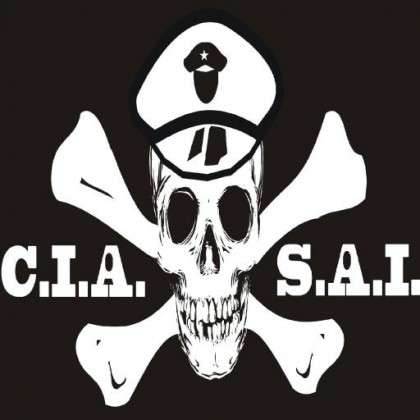The Central Intelligence Agency (CIA) and the Special Activities Center (SAC), formerly known as the Special Activities Division (SAD), collectively form a critical and clandestine component of the United States intelligence community. Operating under the umbrella of the CIA SAI, the Special Activities Center is responsible for conducting covert and unconventional operations to advance national security interests.
Established in 1947, the CIA is the principal foreign intelligence and counterintelligence agency of the United States government. It operates under the jurisdiction of the Director of National Intelligence and is tasked with gathering, analyzing, and disseminating intelligence information to support policy decisions and protect national security.
Understanding the CIA and SAI

The CIA (Central Intelligence Agency) and SAI (Special Activities Center) play important roles in keeping the United States safe. Let’s break it down:
Central Intelligence Agency (CIA):
What they do:
- The CIA started in 1947 and is the main intelligence agency for the U.S. government.
- They collect and analyze information to help leaders make smart decisions about national security.
How they gather info:
- The CIA gathers information from many sources, like people and technology.
- Experts at the CIA SAI study this info to understand what’s happening globally, identify possible threats, and keep an eye on other countries.
Supporting policies:
- One of their jobs is to support the government’s policies by giving them accurate and timely information.
- They work with other agencies to make sure everyone is on the same page when it comes to national security.
Special Activities Center (SAI) – Used to be Special Activities Division (SAD):
Secret Missions:
- Inside the CIA, the SAI is like a special team for secret missions and unconventional warfare.
- They do things like covert operations (super-secret stuff), paramilitary activities, and counterterrorism efforts.
Military Tactics: The SAI also gets involved in military-style activities, especially in places where traditional military actions might not work well.
Working with the CIA: The SAI is part of the CIA SAI, working together to use intelligence and special skills for tricky operations.
- They handle things that need extra secrecy and special abilities.
Working Together Around the World:
Teamwork: The CIA and SAI work closely together to make sure they cover all aspects of intelligence and secret operations.
- The SAI brings its unique skills to the CIA’s broader mission.
Everywhere, Anytime:
- Both the CIA and SAI have people and stations all over the world.
- This global reach helps them keep an eye on what’s happening internationally, deal with new threats, and protect U.S. interests everywhere.
CIA: Central Intelligence Agency
The CIA, or Central Intelligence Agency, is a crucial component of the United States government tasked with gathering, analyzing, and interpreting intelligence information to support national security and inform policy decisions. Established in 1947, the CIA operates under the Director of National Intelligence and plays a primary role in safeguarding the country’s interests both domestically and internationally.
Key Functions of the CIA:
- Intelligence Gathering: The CIA collects information from various sources, employing a combination of human intelligence, signals intelligence, and other technological means.
- Analysis and Assessment: Experts within the CIA analyze gathered intelligence to provide insights into global events, assess potential threats, and understand the activities of foreign entities.
- Policy Support: A significant responsibility of the CIA is to support U.S. government policies by delivering accurate and timely intelligence to policymakers.
- Cooperation with Other Agencies: The CIA SAI collaborates with other intelligence agencies and government departments to ensure a coordinated and comprehensive approach to national security.
Global Reach and Operations:
- Worldwide Presence: The CIA maintains a global presence with stations and personnel strategically positioned around the world.
- Monitoring International Developments: This global reach allows the CIA SAI to monitor international developments, assess potential threats, and gain a deep understanding of geopolitical dynamics.
- Addressing Emerging Threats: The agency plays a crucial role in addressing emerging threats, providing critical information to counteract challenges to national security.
- Protection of U.S. Interests: By leveraging intelligence capabilities, the CIA actively works to protect U.S. interests and ensure the nation’s security.
In summary, the Central Intelligence Agency is a key pillar of the U.S. intelligence community, contributing significantly to the country’s ability to navigate complex geopolitical landscapes, counter potential threats, and make informed decisions to safeguard national security.
SAI: Strategic Arms Initiative
The term “Strategic Arms Initiative” (SAI) can mean two different things:
- Strategic Defense Initiative (SDI): Proposed by President Ronald Reagan in 1983, the SDI aimed to create a defense system against large-scale nuclear missile attacks. Often called “Star Wars,” it planned to use space-based lasers and ground-based missiles to destroy incoming missiles. Challenges led to the program scaling back and becoming the Ballistic Missile Defense Organization (BMDO) under President Bill Clinton.
- Strategic Arms Limitation Talks (SALT): Taking place from 1969 to 1979, the SALT negotiations between the U.S. and the Soviet Union focused on limiting strategic nuclear weapons. Treaties like SALT I and SALT II set restrictions on the number of missiles each side could possess, contributing to arms control during the Cold War.
The Interplay between CIA and SAI
The interaction between the CIA (Central Intelligence Agency) and SAI (Special Activities Center) represents a nuanced interplay within the realm of intelligence, security, and covert operations. Here’s an overview of how these two entities work together:
Collaboration:
- Strategic Alignment: The CIA and SAI collaborate strategically to ensure a comprehensive and coordinated approach to intelligence and covert activities.
- Specialized Skills: The SAI, as a specialized division within the CIA, contributes unique skills and capabilities to enhance the broader mission of the CIA.
Roles and Functions:
CIA’s Intelligence Focus:
- The CIA SAI is primarily focused on intelligence gathering, analysis, and providing policymakers with critical information.
- It operates globally, monitoring international developments, assessing threats, and supporting U.S. government policies.
SAI’s Covert Operations:
The SAI specializes in covert operations, including paramilitary activities, special reconnaissance, and counterterrorism efforts.
- It operates under the umbrella of the CIA SAI , handling missions that require a higher level of secrecy and specialized skills.
Integration:
- Operational Unity: The SAI operates seamlessly within the CIA, ensuring operational unity while leveraging the broader intelligence capabilities of the agency.
- Specialized Focus: While the CIA SAI covers a wide range of intelligence activities, the SAI provides a specialized focus on clandestine and unconventional operations.
Global Presence:
- Worldwide Stations:
- Both the CIA and the SAI have a global presence, with personnel and stations strategically positioned worldwide.
- This global reach enables them to monitor international developments, address emerging threats, and protect U.S. interests on a global scale.
Dynamic Duo:
- Complementary Roles: The CIA and SAI function as a dynamic duo, with the CIA handling intelligence and the SAI managing covert and paramilitary operations. This collaboration allows them to navigate complex geopolitical challenges effectively.
- Adapting to Challenges: The interplay between the CIA and SAI allows for adaptability in addressing evolving threats, ensuring a flexible and comprehensive response.
In essence, the interplay between the CIA and SAII is characterized by collaboration, integration, and a complementary division of roles. Together, they form a dynamic and effective partnership within the U.S. intelligence community, contributing to the nation’s ability to safeguard its interests and navigate the complexities of the global landscape.
Conclusion
In conclusion, the collaboration between the Central Intelligence Agency (CIA) and the Special Activities Center (SAI) underscores a dynamic and strategic partnership within the realm of U.S. intelligence and security. The CIA SAI , with its primary focus on intelligence gathering and analysis, synergizes with the SAI, a specialized division adept at covert operations and unconventional warfare.
This interplay allows for a comprehensive approach to addressing national security challenges, combining the broader intelligence capabilities of the CIA with the specialized skills of the SAI. The two entities work in tandem, strategically aligning their efforts to monitor global developments, assess threats, and protect U.S. interests on a global scale.
Frequently Asked Question
The CIA, or Central Intelligence Agency, is a U.S. government agency established in 1947. Its primary role is to gather, analyze, and provide intelligence to assist policymakers in making informed decisions related to national security. The CIA operates globally, collecting information from various sources to understand international developments and potential threats.
The CIA and SAI collaborate strategically, with the CIA primarily focused on intelligence gathering and analysis, while the SAI specializes in covert operations. The SAI operates seamlessly within the CIA, providing specialized skills for missions that require a higher level of secrecy and unconventional approaches. Together, they form a dynamic partnership within the U.S. intelligence community.
Prime-time Super Bowl slots offer advertisers optimal visibility. The large and engaged audience during these hours ensures that commercials reach a vast demographic, maximizing the impact and effectiveness of advertising campaigns.






